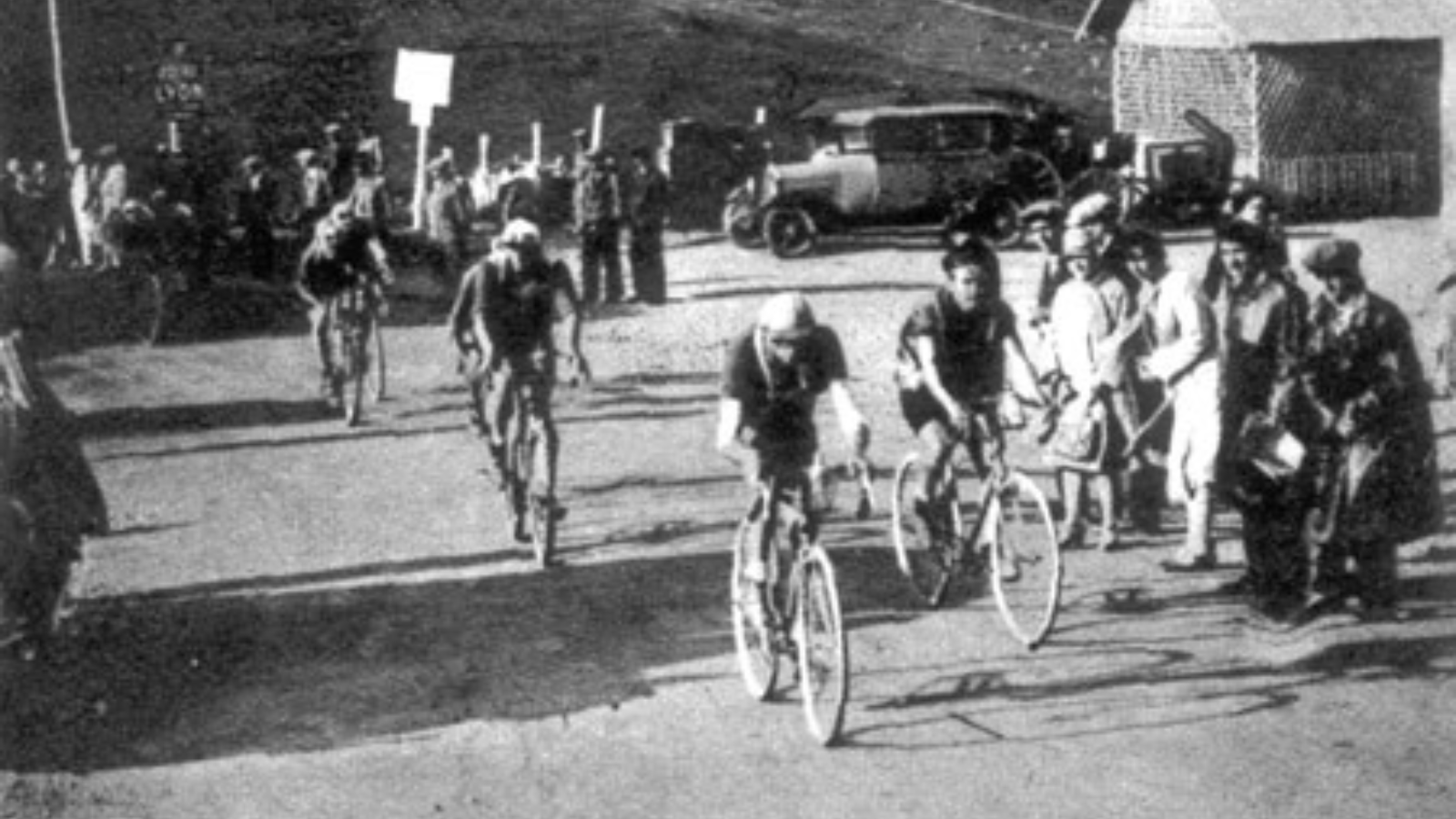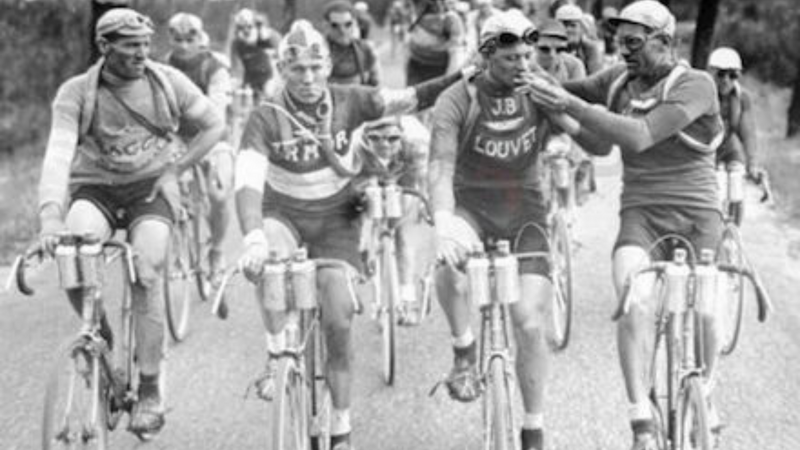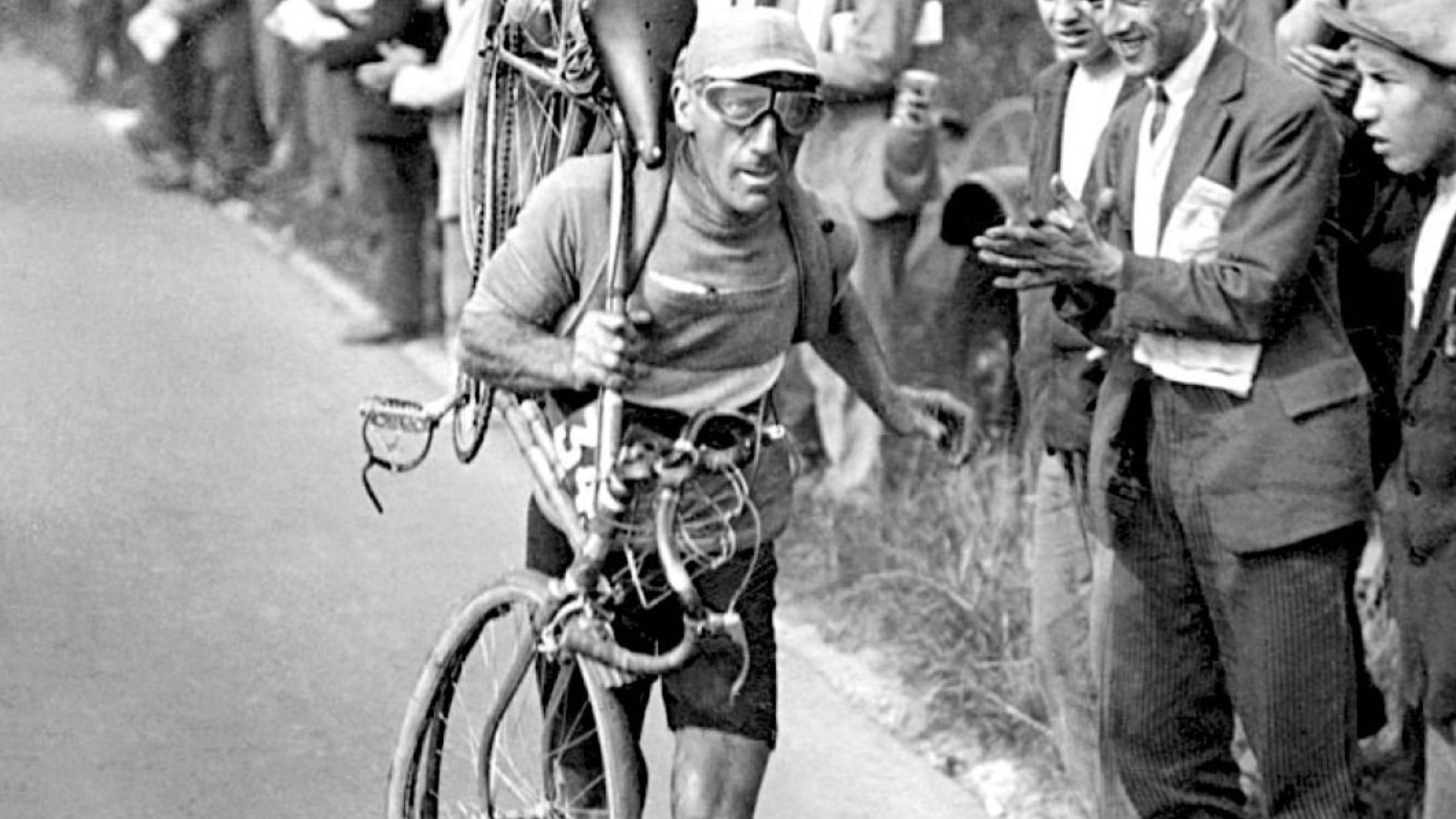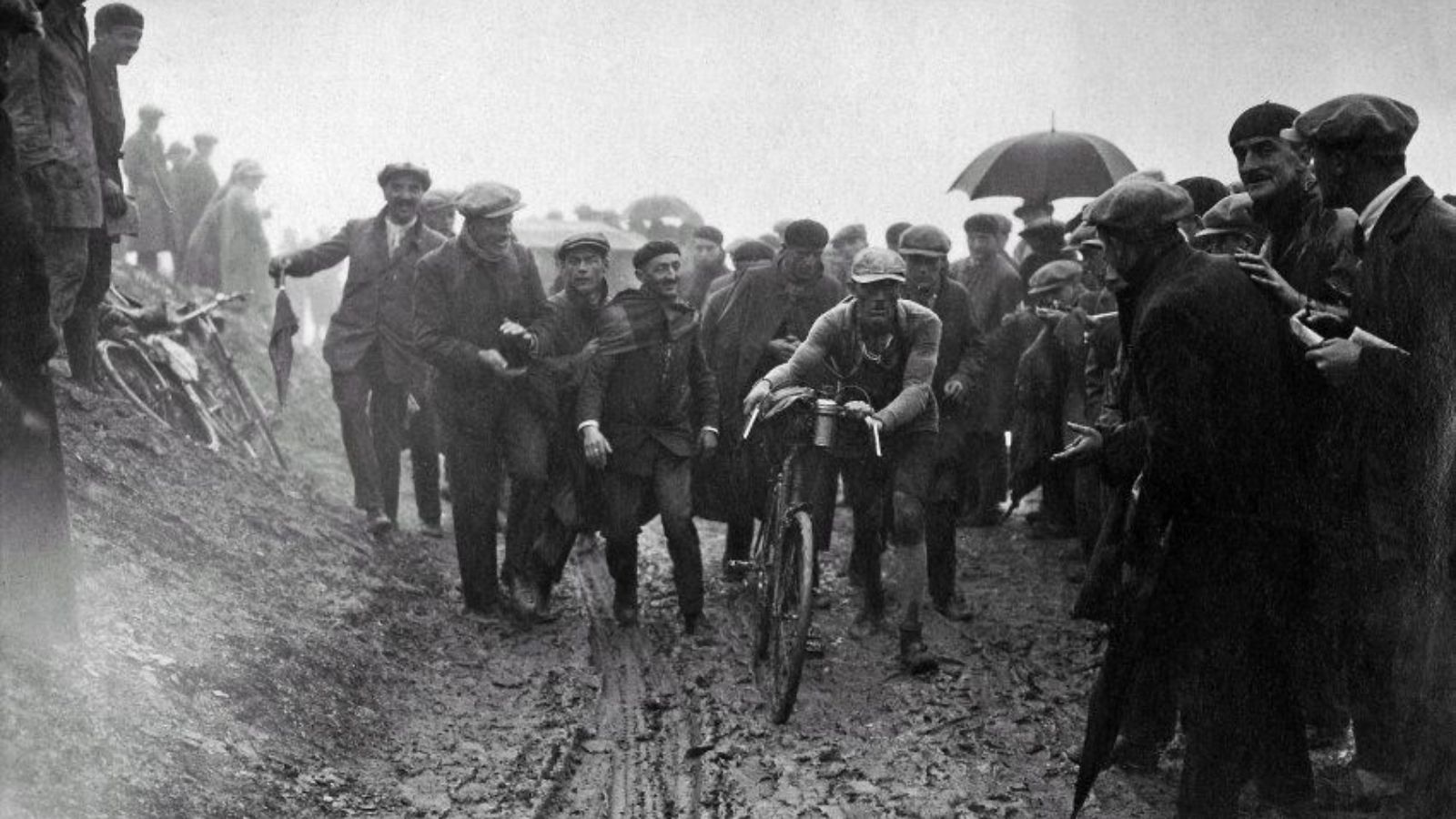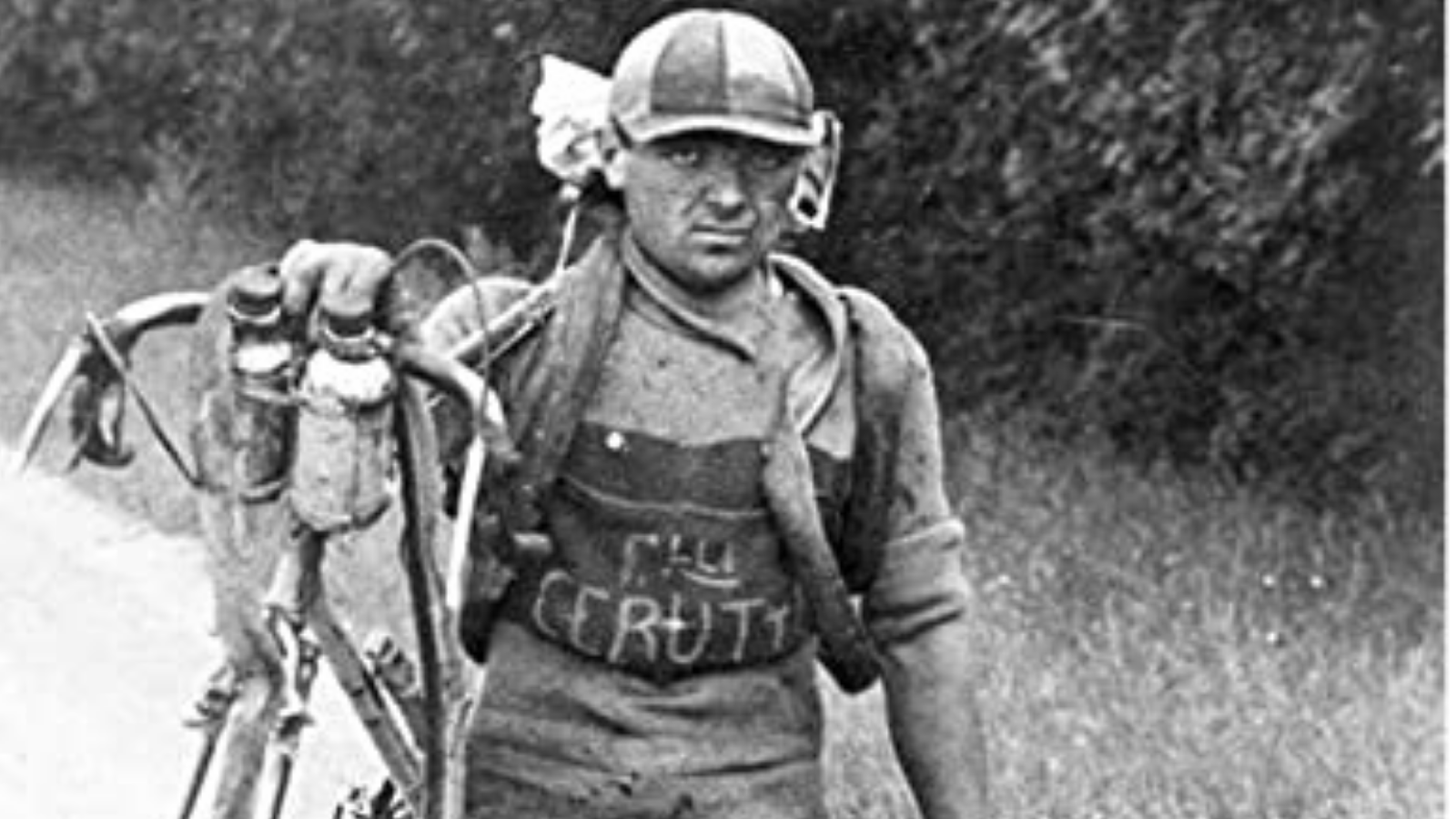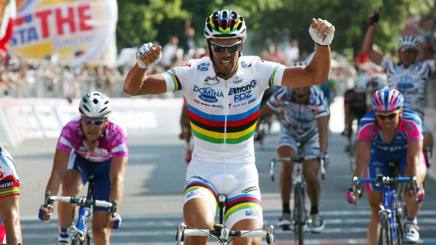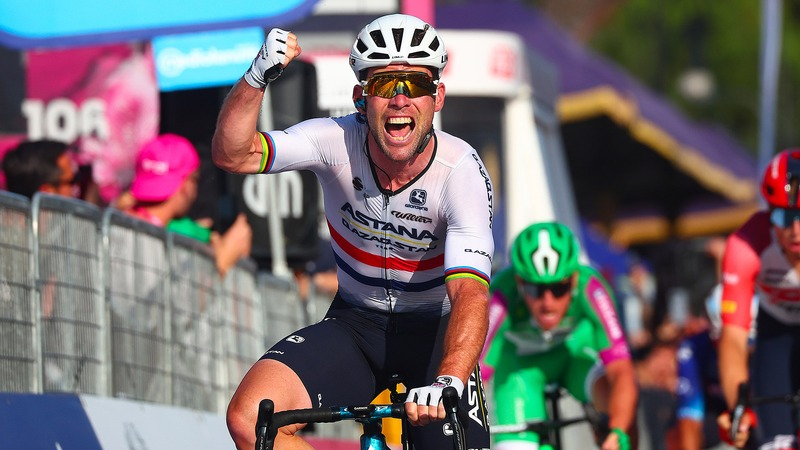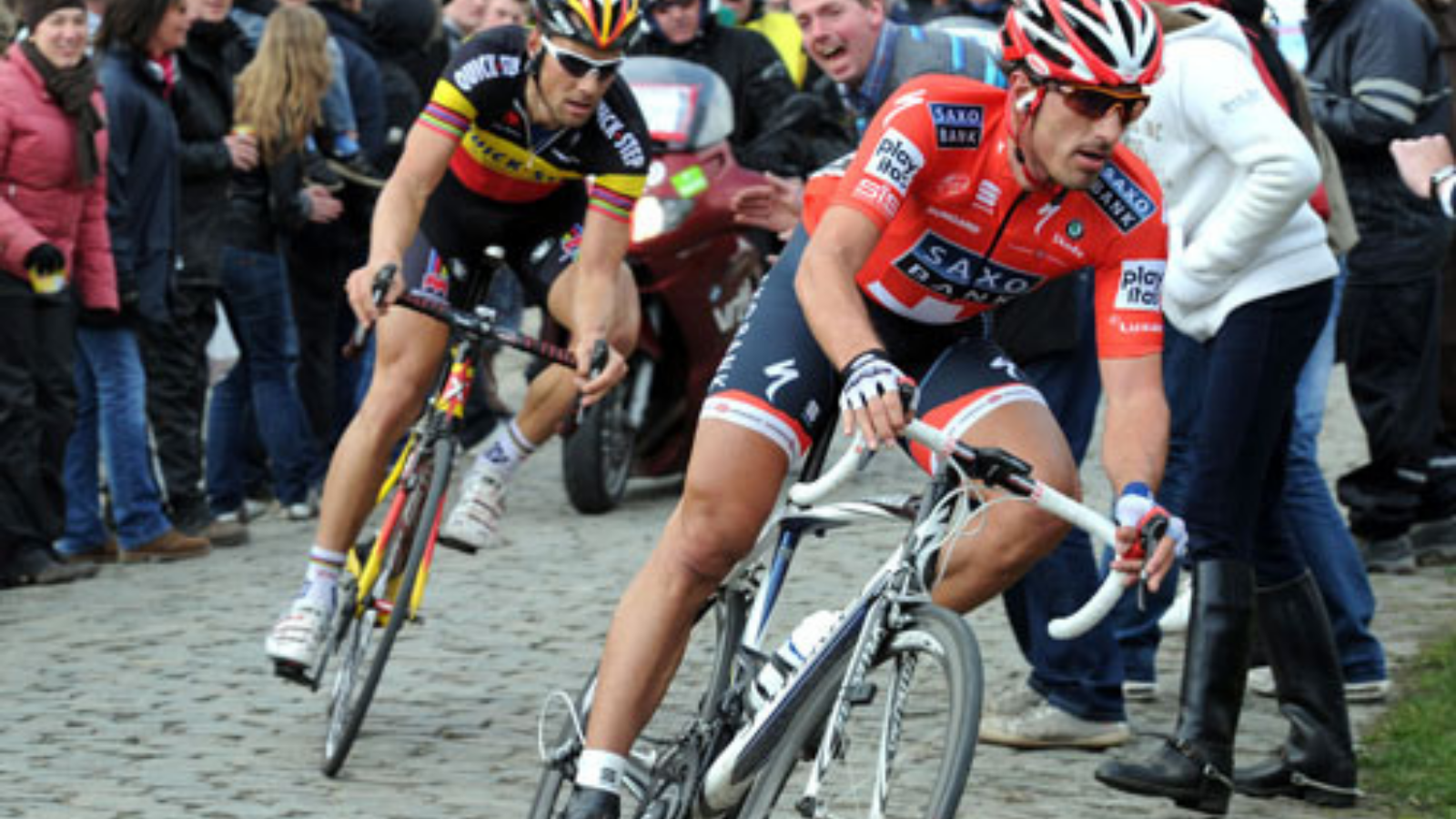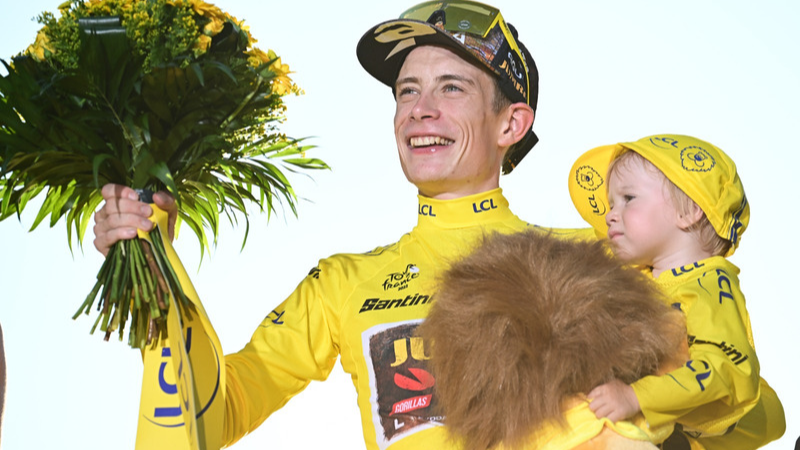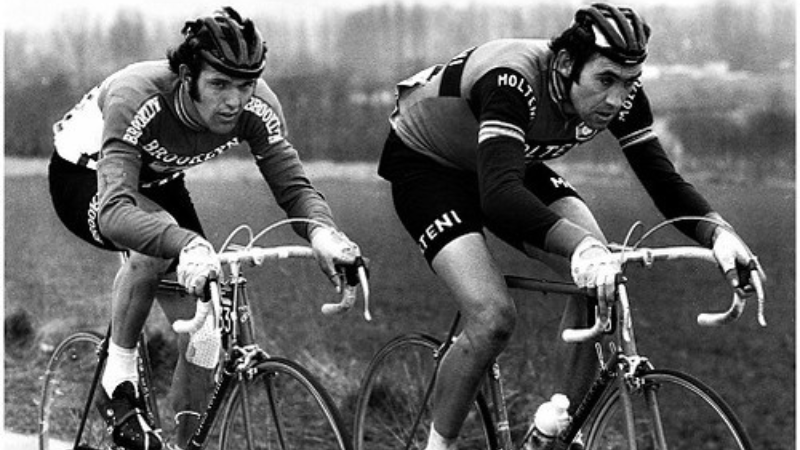I really wish there was somewhere a coloured picture of three cyclists wearing yellow jersey at the same time. A unique situation that would deserve a visual representation. But unfortunatelly, there are only few pictures about Tour de France 1929 out there.
Nevertheless, this particular edition of Tour de France was notable also for another reason.
The 23rd Tour de France was held between 30 June and 28 July 1929. It's probably most memorable from the famous quote of Henri Desgrange:
"My race has been won by a corpse."
- because Maurice De Waele, despite being very ill on the last few stages, won the race thanks to the effective teamwork.
Working through the hard days with the help of the teammates would be the most normal thing nowadays, but it contradicted Henri Desgrange's ideas how a cycling race should be won. Hence he decided to invite national teams from the next edition (which tradition has continued until 1961).
But before Maurice De Waele inherited the yellow jersey from Victor Fontan, who had to abandon the race in the 10th stage, there was another unique situation.
After the 7th stage,there were three riders with the same time in the general classification: Nicolas Frantz, André Leducq and Victor Fontan.
Again, nowadays, being provided by so many and different types of data, it wouldn't be a problem to decide who is the actual leader of the race, but in 1929 it was a different world.
Thus the organizers decided to give the yellow jersey to all three riders. It was the only time it happened in the history of Tour de France, and it lasted only a day.
(lead picture random image from the Tour de France 1929)
If you like to read more about Tour de Framce in the 1920s, or about road cycling history generally, pelase look around PelotonTales blog.
TOUR DE FRANCE IN THE 1920S
Who were the smoking cyclists at Tour de France 1927
The smoking cyclists of Tour de France 1927 is one of the most famous vintage cycling images from the heydays of road cycling races. It’s popular because it conveys a certain aspect of the many differences between our time and the life hundred years ago. The dissonance between our 21st-centurian knowledge that smoking is very … Read more
Faces from the peloton: Victor Fontan (1892-1982)
A cyclist running while carrying his bike on his shoulder. Surely, you’ve seen this vintage cycling image several times. Now it’s time to learn a bit more about the protagonist of the picture. Victor Fontan (1892-1982) in the Faces from the peloton series of PelotonTales blog. A local rider World War I (as did World … Read more
The toughest Tour de France stage ever
The 10th stage of Tour de France 1926 is often dubbed as the toughest stage ever in the history of the race. The 326 km long route between Bayonne and Luchon on the 6th July 1926 went down in history also as one of the most chaotic ones thanks to the extreme weather conditions in … Read more
The grumpy cyclist with the broken bicycle – Giusto Cerutti at Tour de France 1928
Giusto Cerutti (1903-1993) had at least one bad day at the Tour de France in 1928.We don’t know much about the grumpy cyclist with the broken bicycle. But one thing is sure, he is the unlucky (anti)hero of one of the most searched vintage cycling images on the internet.According to ProCyclingStats, Cerutti abandoned the race … Read more
Cyclists meet a local inhabitant during Tour de France 1925
During the first few decades in the history of Tour de France, mountain routes were kind of “terrae incognitae”, uncharted territories. We all know the story when Alphonse Steniès persuaded Henri Desgrange to include Tourmalet in the program of Tour de France 1910. He was struggling even to find a car driver, a local guide … Read more
CYCLING FUN FACTS
The most Giro d’Italia stage victories
Mario Cipollini won the most Giro d’Italia stages He became the sole record holder on the 9th stage of Giro d’ Italia in 2003See the list of the top 25 riders:Mario Cipollini 42Alfredo Binda 41Learco Guerra 31Costante Girardengo 30Eddy Merckx 25Giuseppe Saronni 24Francesco Moser 23Roger De Vlaeminck 22Alessandro Petacchi 22Fausto Coppi 22Franco Bitossi 20Miguel Poblet … Read more
The youngest and the oldest Giro d’Italia stage winners
Olimpio Bizzi is the younges stage winner ever with19 years and 229 days.He won the 8th stage at Giro d’Italia 1936.Mark Cavendish was38 years and 7 daysold, when he crossed the finish line first in the last stage of Giro d’Italia 2023.
Double winners of Ronde van Vlaanderen and Paris-Roubaix
Winners of both Ronde van Vlaanderen and Paris-Roubaix in the same year: Henri Suter 1923 Romain Gijssels 1932 Gaston Rebry 1934 Raymond Impanis 1954 Fred De Bruyne 1957 Rik Van Looy 1962 Roger De Vlaeminck 1977 Peter van Petegem 2003 Tom Boonen 2005 Fabian Cancellara 2010 Tom Boonen Belgium 2012 Fabian Cancellara 2013 Mathieu van … Read more
The slowest and the fastest Tour de France
You might wonder which Tour de France edition was the slowest and wich. one the fastest. Here you have the answer.The slowest Tour de Francewas the 13th edition, held between 29th June and 27 July in 1919. The 5560 km long route of the race was divided into 15 stages. (And it wasn’t even the … Read more
9 fun facts of Omloop Het Nieuwsblad
The first edition (originally called Omloop van Vlaanderen) was held on 25 March 1945. It was only a few weeks after Belgium was liberated by the Aliied Forces, Jerome Stevens, journalist of the Het Volk newspaper, crewtor of the rsce had to have an approval of the British Army to hold the event. Jerome Stevens … Read more
